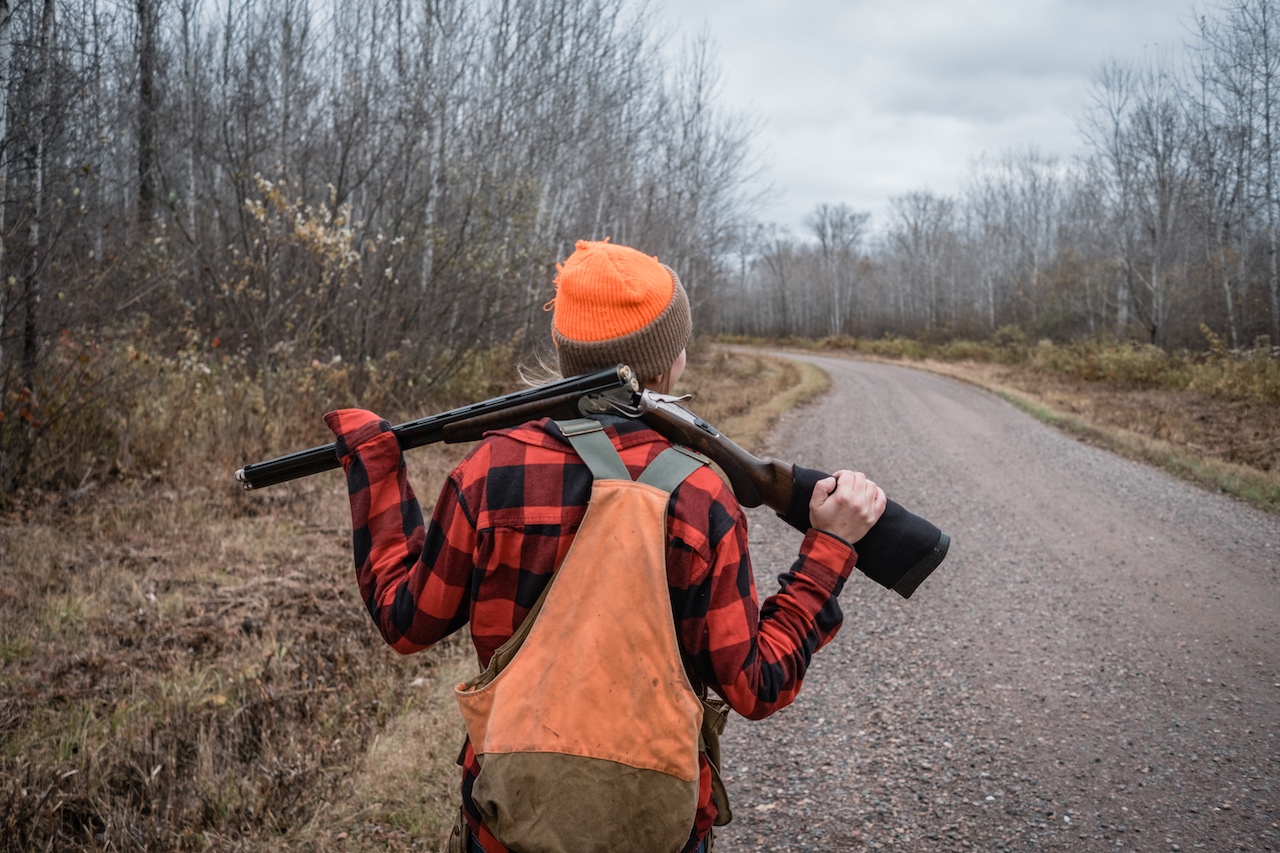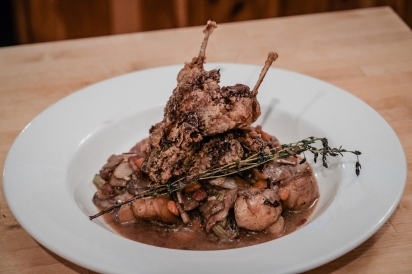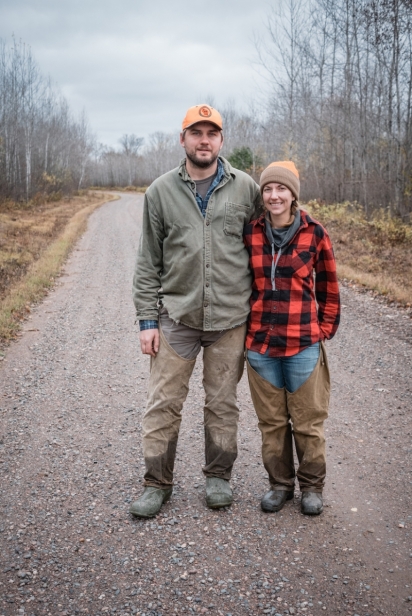Beginning the Hunt
Imagine walking through Wisconsin’s remnant oak savannas to your hunting blind on a brisk spring morning. As the sun rises and woods awaken, a roosting tom turkey gobbles no more than 100 yards from you. Your hunting mentor yelps on a hen call and another gobble immediately follows. A short time later, you see the colorful head of a tom turkey poke through the grass, strutting towards the decoys you placed earlier. You steady your shotgun, aim at the base of the head and fire.
It’s hard to find protein more locally sourced and sustainable than wild game. But how do you do it? How does someone who has never hunted, fired a gun, purchased gear or even looked up public hunting lands get started? These initial hurdles are often enough to deter people from even considering hunting. That’s where the Wisconsin DNR comes in.
Since 2012, the Wisconsin DNR’s Hunt for Food program has evolved to address barriers for novice hunters. This in-depth, adult-focused course hones in on basic biology, firearm handling and target practice, regulations, scouting, where to hunt, strategies, gear, field dressing and butchering, as well as any questions you may have in between. To top it off, the class is free—and many feature a wild game potluck to get you in the mood for the big hunt.
The DNR offers a range of Hunt for Food schedules—some spanning several weeks with class once a week in the evening and others occurring over three to four consecutive evenings. All Hunt for Food programs are followed by a hunt with an experienced mentor!
Yes, there is a small time commitment, but it is worth it to receive the skills necessary to hunt on your own from some of the most knowledgeable hunters (and wild game cooks) around. Through partnerships with the National Wild Turkey Federation (NWTF), Pheasants Forever (PF) and other organizations, the Wisconsin DNR has expanded the Hunt for Food program to different locations across Wisconsin.
John Motoviloff, Wisconsin R3 Coordinator for the NWTF and author of wild game cookbook, Wild Rice, Goose and Other Dishes of the Upper Midwest, says that, “Hunting is often the best means possible for those interested in acquiring local, natural protein.” Motoviloff leads several Hunt for Food classes in the spring, fall and winter.
To date, most Hunt for Food programs have focused on wild turkey or white-tailed deer, as these species provide larger quantities of meat. Recently, however, the program has expanded to small game and waterfowl. Marty Moses, Wisconsin R3 Coordinator for PF, led a rabbit and squirrel Hunt for Food class last fall.
If you’re interested in sourcing local protein, participating in one of Wisconsin’s rich traditions or simply getting outside to enjoy Wisconsin’s wild side, then this program is for you. Expect open arms, a low-stress learning environment and an atmosphere reminiscent of hunting camps across the state. This is your hunt. You make the decisions with the proper guidance along the way, all while connecting to nature and exploring all that Wisconsin has to offer.
Hunt For Food Programs
dnr.wi.gov/education/







